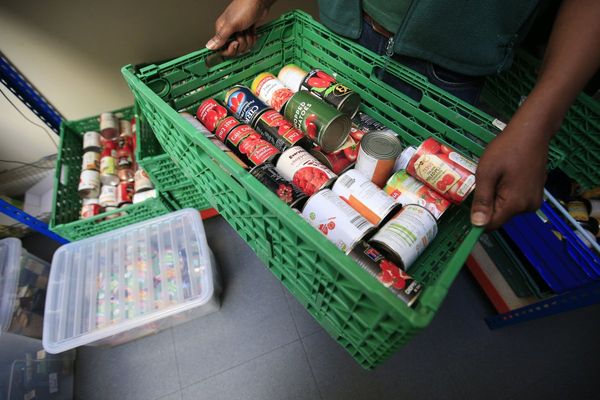
Russia’s recent missile and drone strikes on Ukraine have highlighted three war developments.
Firstly, Iran appears to be playing a significant role in arming Russia.
Then there is the strong indication Russia has been running very low on its own stock of missiles
And finally, this new level of intensity means Ukraine is going to need help from the West if this new influx of missiles is to be stopped.

In recent weeks, despite Iranian and Russian denials, images of the Shahed-136 drones, their distinctive delta wings silhouetted against the sky, have circulated around the global media.
In Kyiv, tower block residents watched in horror as the drones flew below their windows, the lawnmower-like whine of their engines clearly heard, as they purposefully made their way to intended targets.
Russia has singled out Ukraine’s energy infrastructure for destruction, as the region relentlessly slips into winter.
Plunging temperatures, Russia hopes, will cow and subdue the Ukrainian population.
Rolling blackouts across the country have clearly demonstrated the effectiveness of this new influx of Iranian-made drones in slowly destroying the country’s national grid.

A type of loitering munition, the Shahed-136 is not designed to return but to be destroyed on impact, a guided flying bomb used by Russia as a cheap cruise missile.
Launched in packs, these drones are designed to fly low, evading radar.
Their low altitude and slow speed mean they can be shot down by individual soldiers, as many have been, but they can also be used against front-line positions and are more manoeuvrable than faster missiles.
And they are relatively cheap at $20,000 each, compared to the hundreds of thousands for more advanced weapons of their type – allowing Russian forces to send volleys towards Ukrainian cities and military positions.
With their 40kg warheads, the Shahed-136s, which are accurate machines, cause significant damage.
Russia has been able to modify and rebrand the Iranian drones as “Geran-2”, to be guided by satellite positioning systems such as GLONASS, Russia’s GPS.

Moscow has claimed that these renamed, modified and repainted drones are Russian and not Iranian at all – a thin layer of deniability that has been swept aside by the overwhelming evidence that the bulk of the manufacture is Iranian in origin.
Meanwhile, in this high-tempo conflict with Ukraine that has only run a few months, Russia has used up most of its missile inventory.
With the economy still on a peacetime footing, there is no quick way to replenish its rapidly dwindling stocks. Russian missiles, while advanced, are expensive and time-consuming to make.
With most of the world having either turned against the invading nation or cowed by sanctions from doing business with Russia, it has few partners to turn to.
Enter Iran.
Iran’s new weapons
One of the ironies of sanctions against Iran is that it now has a robust military-industrial complex, with a particular focus on drones and short- to medium-range missiles.
Tehran has steadily improved on domestic designs, incrementally increasing range, accuracy and survivability of long-range drones, loitering munitions and a large and growing arsenal of missiles like the Fateh-110 and the more advanced variant, the Zolfaghar.
Both are road-mobile and solid-fuelled, meaning they can emerge from a hidden position and launch within minutes before ducking back under cover.
This makes them more likely to survive any potential conflict.

Their ranges, 300-500km for the Fateh-e-mobin (an improved version) and 700km for the Zolfaghar, make them useful for theatre-level warfare while their accuracy, down to a few metres and constantly being improved, allows them to hit specific point targets like bridges, command posts and missile batteries.
Russian technology has helped improve the accuracy of its imported Iranian drones, and it is likely that Moscow’s help will do the same for these deadly weapons.
What’s behind Iran’s alleged move?
Questions are being asked at the United Nations Security Council about whether Iran has broken its treaty obligations by actively supporting Russia, a pariah on the world stage.
Even so, Iran has something to gain.
Though many different models and types of drones and missiles are being manufactured there, the true test of any weapon system is the brutal school of combat, for which there are no prizes for second place.
While some models have been tested by Iranian proxy forces in the past, there will be a wealth of valuable information to be gleaned when the country’s weapons systems are pitted against an industrially-sized power supplied with Western weapons, the very sort Iran could see itself going up against in any potential future conflict.
This feedback to Iranian analysts and weapons designers will help improve future missiles and drones, making them all the more lethal.

Another reason for Iran’s reported involvement is that Russia may agree to sell 24 of its extremely advanced Sukhoi Su-35 fighters to the Iranian air force, which has a number of antiquated fighter jets of which older versions of the MiG-29 are its best.
Russian know-how, technology transfer and engineering skills would boost Iran’s ability to field aircraft that would at least have a chance of survival in a future conflict.
It would also be possible to back engineer some of these advanced Russian jets, incorporating some of the Su-35’s design features, like advanced radars that can simultaneously track 24 targets, vector-thrusting to greatly improve agility and a range in excess of 3,500km (2,175 miles).
So Russia has little option but to import relatively cheap, effective Iranian missiles.
But its drone programme is also playing catch-up as Moscow never really invested in the technology – unlike NATO countries, such as Turkey and the United States, which were both quick to grasp their potential.
Ukraine’s air defence shield
So, how has Ukraine been impacted?
Officials in Kyiv must be increasingly concerned that Russia will use these cheap imports to swamp Ukraine’s air defences.
The effort to shoot down the recent drone swarms has significantly depleted Ukraine’s inventory and replacements are badly needed to protect its HIMARS batteries and cities from attack.
At the start of the war, Ukraine had S-300 and Buk air defence systems, capable of long-range defence against fast-moving targets and able to tackle slower yet low-altitude flying cruise missiles.
A protracted, intense conflict means Ukraine is also short on sophisticated weapons and is not able to buy replacement missiles in anywhere near the amounts it needs to sustain a campaign.
The recent Russian strikes highlight how badly Ukraine needs Western air defence systems.

This comes at a time when Western help is starting to plateau, with NATO militaries now looking to their own depleted stocks.
Again, complex weapons systems take time to build.
For it to be effective, air defence needs to be multilayered.
High-speed, long-range weapons are needed to counter incoming ballistic missiles with minimum speeds of 2,000 to 3,000km/h (1,240mph to 1,865mph), with many models flying much faster, in the true hypersonic range of Mach 5 or higher.
Mach 5, in case you are interested, is about 6,115km/h (3,800mph) – five times the sound of speed.
These systems need sophisticated radars that can track multiple fast-moving objects, identifying them and predicting their path so air defence missiles can be fired in the right place at the right time to intercept and destroy.
These advanced weapons have now started to arrive:
NASAMS
The first NASAMS, or National Advanced Surface-to-Air Missile Systems, arrived in Ukraine in September.
A Norwegian/US collaboration, NASAMS has distributed radars that can spot and track a variety of targets over a very wide area, extremely suitable for protecting the vast Ukrainian landscape.
NASAMS can also incorporate very different air defence systems into its architecture, meaning Ukraine can add weapons systems to it, integrating them into one effective air defence umbrella that is capable of growing in effectiveness as it increases in size.
IRIS-T
Germany has rushed four of its short-to-medium-ranged IRIS-T Air defence missile systems to Ukraine.
They arrived in early October, partly to help Ukraine, but also to counter growing domestic and international impatience with what is being perceived as Berlin’s indifference to the conflict.
The IRIS-T is so new that it has never been tested in combat. Germany’s armed forces have not used the weapon.
There is one pro-Western country, however, which already possesses an effective, multilayered advanced air defence system.
But things are complicated…
Israel’s reticence and the Cold War with Iran
Ukraine, which has strong cultural ties with Israel, was surprised when it was recently rebuffed for purchases of the short-range Iron Dome and medium-range Barak 8 air defence weapons.
Israel is pushing to export both weapons to several countries interested in buying, but it has refused to sell to Ukraine because such a move could trigger a Russian military response.
Russia controls much of Syrian airspace and Israeli jets regularly pound targets in and around Damascus and parts of southern Syria.
Iranian military convoys allegedly carrying missiles and drones have been repeatedly attacked by Israeli fighter jets.
In late October, a suspected Iranian drone-making factory was destroyed near the capital Damascus in a rare daytime air strike by Israeli aircraft.
Israel says Iran’s military encroachment in Syria is a dangerous and persistent threat.
And an intervention on the side of Ukraine could threaten a cold form of peace between the two countries nearer to home – a delicate balance Israel would rather not risk disturbing.
Winter woes
The arrival of Iranian weapons startled the world, and the aftermath of the attacks, mainly focused on Ukraine’s civilian population and energy infrastructure, have helped President Volodymyr Zelenskyy’s pleas for advanced weapons – especially as winter approaches.
The weather – cold, wet, boggy, muddy and even snowy – will not stop the fighting but is certain to enhance the suffering of the Ukrainian people, who are now enduring regular blackouts as energy is hoarded and conserved.
After Russia’s recent sharp defeats in the northeast and the south, a new sense of optimism has swelled on the streets of Ukraine’s major cities.
While Ukrainians may be certain in their minds of eventual victory, that initial optimism has been tempered by the realisation that the war is likely to be more drawn out than people had realised.
Ukraine’s survival depends on the continued goodwill of NATO countries and the huge arms funnel pouring advanced weapons to Kyiv’s armed forces.







